STORY TIME | Kilgore Bulldogs football history!
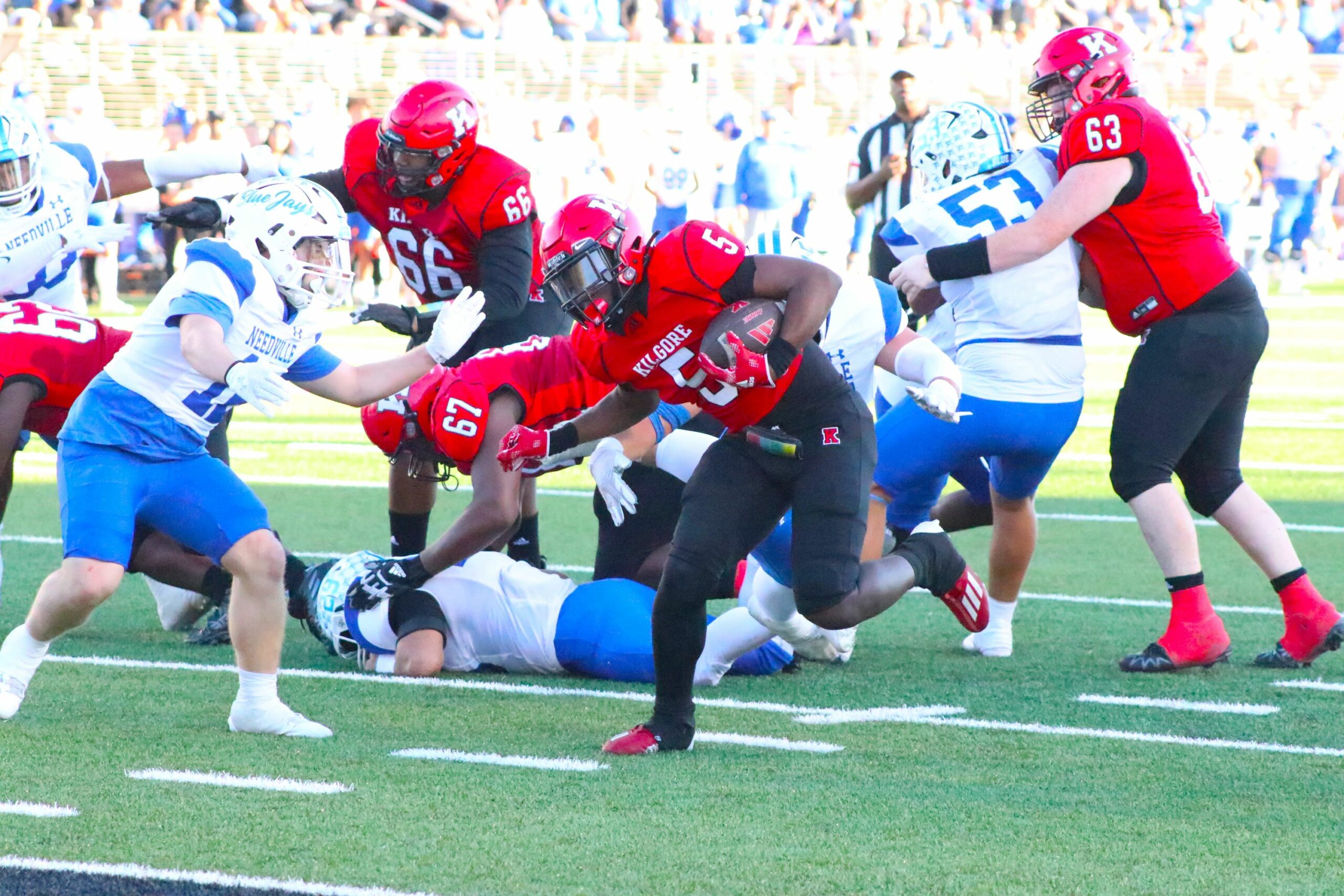
EDITOR’S NOTE: This is the first in a series of stories on the football programs in the ETBlitz.com coverage area, on the 20th anniversary of the year they won the 2004 state championship: the Kilgore High School Bulldogs!
Kilgore’s football program was founded, and had its first season, in 1931. The Bulldogs went 5-3 in each of their first two years, although the first known record of a coach was Johnny Wright, who was the Bulldogs’ coach for just one season, in 1933, going 4-4-1 that year.
Bob Waters was coach of the program for five seasons (1934-1938), and compiled a 13-24-4 mark.
I.B. Hale led Kilgore for the 1939-40 seasons, going 7-2 his first year and 6-1-2 in 1940.
In 1941, a name very familiar to Kilgore fans – R.E. St. John – was the coach. That’s right: coach St. John was at KHS just one season. And he went 7-2-1 here.
Coach St. John had such an impact – he left his position as football coach at KHS to enter the Navy and serve on the USS Borie DD-215. The Borie became involved with a battle with a German submarine in World War II on November 1, 1943, and coach Richard “Bob” St. John was killed helping rescue his fellow soldiers.
School officials here named the stadium in his honor.
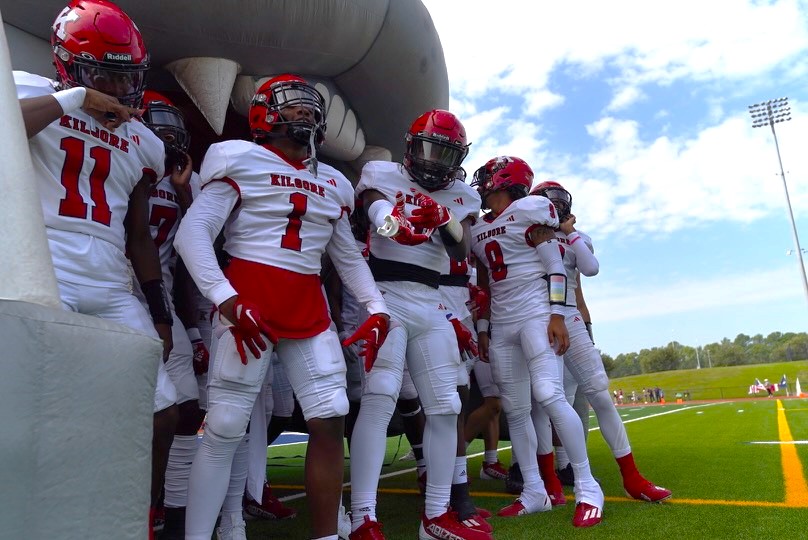
Floyd Wagstaff, who would go on to have a gymnasium named after him on the Tyler Junior College campus, would follow St. John as coach at Kilgore (1942-1944), going 17-10-1 in those three seasons, his best season the very first, a 6-3 mark in 1942.
Wilson McKewen coached the ‘Dogs in 1945-46, with a disastrous year in ’45 (1-8) turning into quite a turnaround in ’46 (6-3-1).
The short-termed coaching tenures would continue for Kilgore for a while. Harold Neal went 12-5-3 in two seasons (1947-48), and M.A. Hopson went 7-19-4 in three seasons (1949-51) before the Bulldogs finally gained some stability under Ty Bain.
Bain came to Kilgore’s campus in 1952 and went .500 (5-5). He would guide the Bulldogs to the program’s first-ever district championship the following year (1953 season) would become the first coach in the program to stay more than five seasons. He would stay a decade, coaching the ‘Dogs through the 1961 season.
Bain’s best year would be the 1956 season, a 9-2 mark, although he did hit at least eight wins in a year on four occasions.
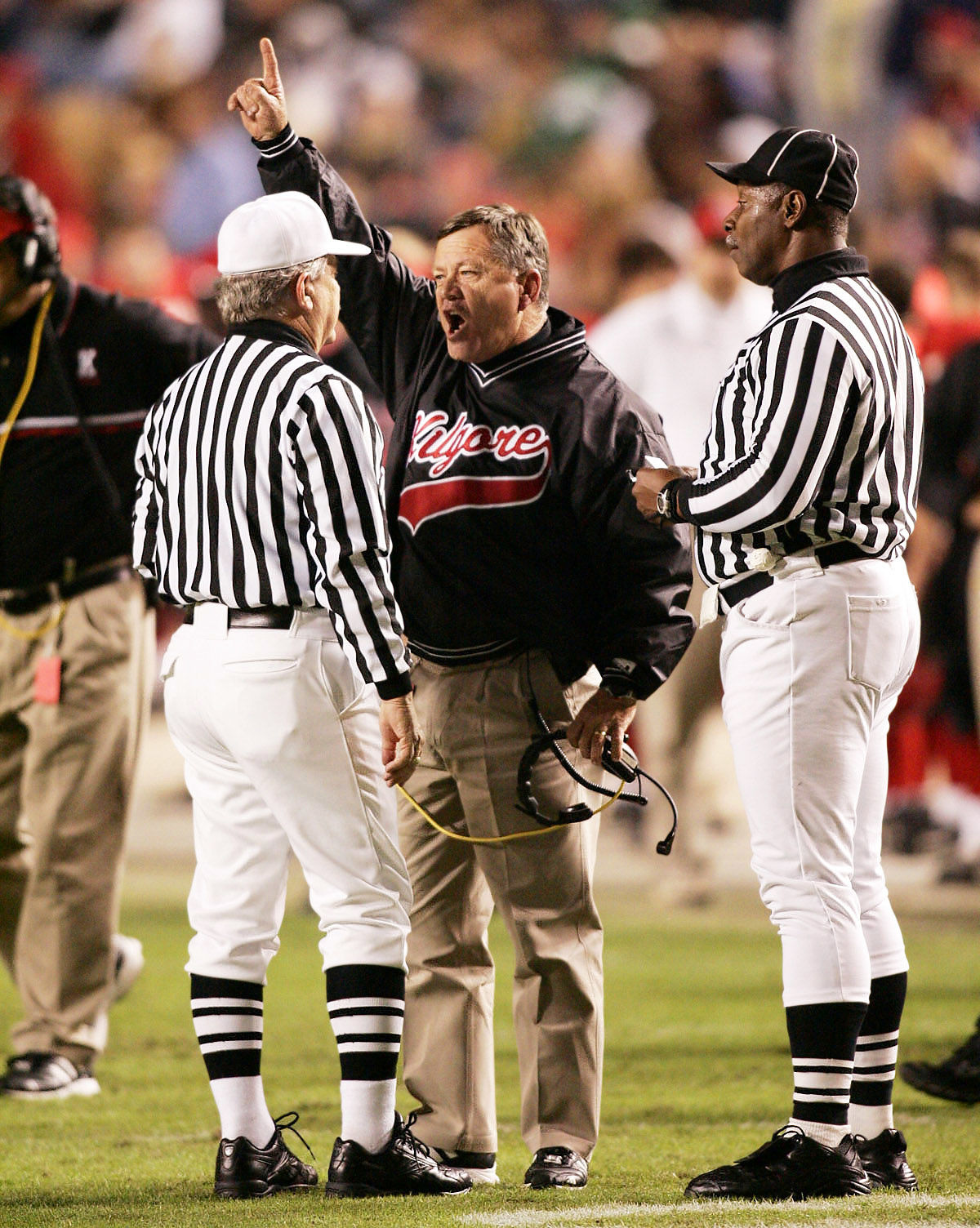
Prince Scott would follow Bain, but for just two seasons, winning eight games in those two years (1962-63, an 8-11-1 record). Kilgore didn’t have a head coach of record, at least listed, in 1965, and then Jim Hess coached the Bulldogs for two years in ’65 and ’66 going 11-9 in that time frame.
Raymond Haas was Kilgore’s coach in the late 1960s – 1967 (3-7), 1968 (2-8), and 1969 (4-5), prior to the arrival of John Blocker. Blocker got in four: 1970-1973. His high marks were eight wins each in the ’72 and ’73 seasons.
The pattern continued, with Buddy Humphrey having two seasons in 1974-75, then Kyle Gantt coaching two seasons in 1976-77 (with some success, 15-4-1). Lawrence Kalmus led the Bulldogs in the late ‘70s and early ‘80s: 1978 through 1981, going 24-17.
Then came a man that would change the program.
James Cameron became Kilgore’s head coach in 1982, the year that “E.T” hit the big screen and the year after MTV swept cable television across the United States. And Cameron brought with him a new term for Kilgore’s football program: the “Ragin’ Red.” They were still the Kilgore Bulldogs, but Cameron’s reasoning was to give Kilgore fans something else to latch onto.
It worked. Kilgore fans still embrace the “Ragin’ Red” today, some 42 years later.
And he would have great success with the program, leading it less than Bain (seven years for Cameron), but with an overall record at KHS of 55-22-2. Cameron guided Kilgore to its best season ever to that point: a 12-2 record in 1987 and an appearance in a playoff game at Texas Stadium. He helped the Bulldogs, his “Ragin’ Red,” go 9-2-1 the following year, in 1988, and then left after his seventh season.
The pattern of Kilgore having short-termed coaches resumed – but only briefly, and Kilgore fans know what’s coming.
Jack Rushing became the Bulldogs’ coach for three seasons (1989-90), going 6-13, and then Billy Rhodes for three (1991-93), going 17-12-3.
And then came Louisiana-born Mike Vallery.
And nothing was the same.
Vallery was a winner’s winner, a man who won as a player, an assistant and as a head coach in Louisiana, and boasted he would do the same in Texas. “Football is football,” he said with a laugh, and although he got off to a rough start – he lost his first couple of games here – he quickly righted the ship.
Mike Vallery took over in Kilgore in the 1995 season, going 7-5. Some might have worried, but they shouldn’t have.
Vallery was laying the foundation of a program that would be a powerhouse in East Texas for years – decades – to come, long after he would retire to the other side of Monroe.
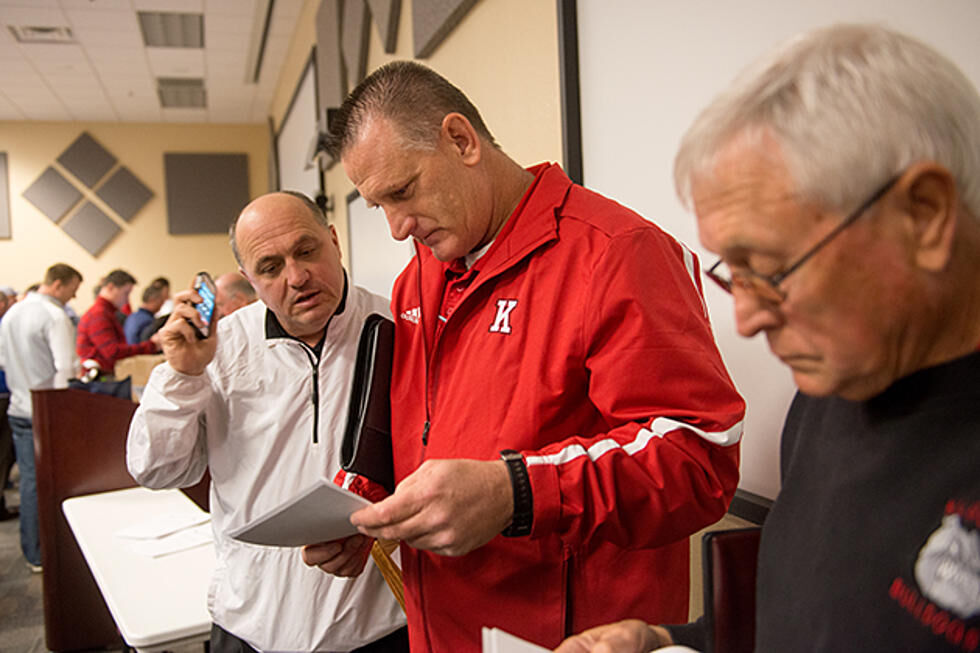
Vallery’s Bulldogs, who would add black to that red-and-white familiar Kilgore color scheme, would go 7-5 in 1995, then 10-2-1 in 1996. Then came three straight nine-win seasons: 1997, 1998, and 1999.
Kilgore took a step back with first-round playoff exits in 2000, 2001 and 2002 (that last one was a home loss to Palestine and future Oklahoma and NFL running back Adrian Peterson).
But what was to come?
A 2003 team that was just unbelievably good, who returned the program to “it” status and to Texas Stadium with a playoff win over Wylie before falling in the fourth round at Rose Stadium to a Matthew Stafford-led Highland Park team (Kilgore would get revenge in the baseball playoffs).
The following year: Kilgore broke through, a 16-0 season that was nothing short of spectacular, and a state championship win over Dallas Lincoln in double overtime that Dave Campbell’s Texas Football named as one of its 100 greatest high school football games in Texas history.
It ended when Nick Sanders, a current Kilgore football assistant coach (at that point, a defensive back) was able to come off the corner, block a field goal attempt, scoop up the loose ball and return it for the game-winning touchdown.
Vallery would go on to coach through the 2009 season, finishing up as Kilgore’s all-time winningest football coach by far (133 wins, 47 losses, and one tie over 15 years). Vallery retired after the 2009 season, in April, 2010, having missed the playoffs only once (2006).
He’d be followed by his assistant head coach and longtime defensive coordinator, Mike Wood, the man who serves as Kilgore’s current athletic director.
Wood’s first season, one of change, was rough: he went 3-7. But they’d quickly improve, going 9-5 the following year, 11-2 the year after, and in 2013, 14-1 and back in the state championship game, although they would lose that game to Carthage, unfortunately, at AT&T Stadium.
Wood coached the Bulldogs for 11 seasons and totaled 83 wins and 53 losses. He elected to retire from the sidelines and serve as athletic director only for KISD after the 2020 season.
That’s when Clint Fuller came home.
Fuller, the son of former Kilgore College defensive coordinator Phil Fuller, had helped Pleasant Grove win a state championship with close friend Josh Gibson, but it was time for a head coaching job of his own. And what better than the job he wanted growing up: the head coaching job leading the Kilgore Bulldogs?
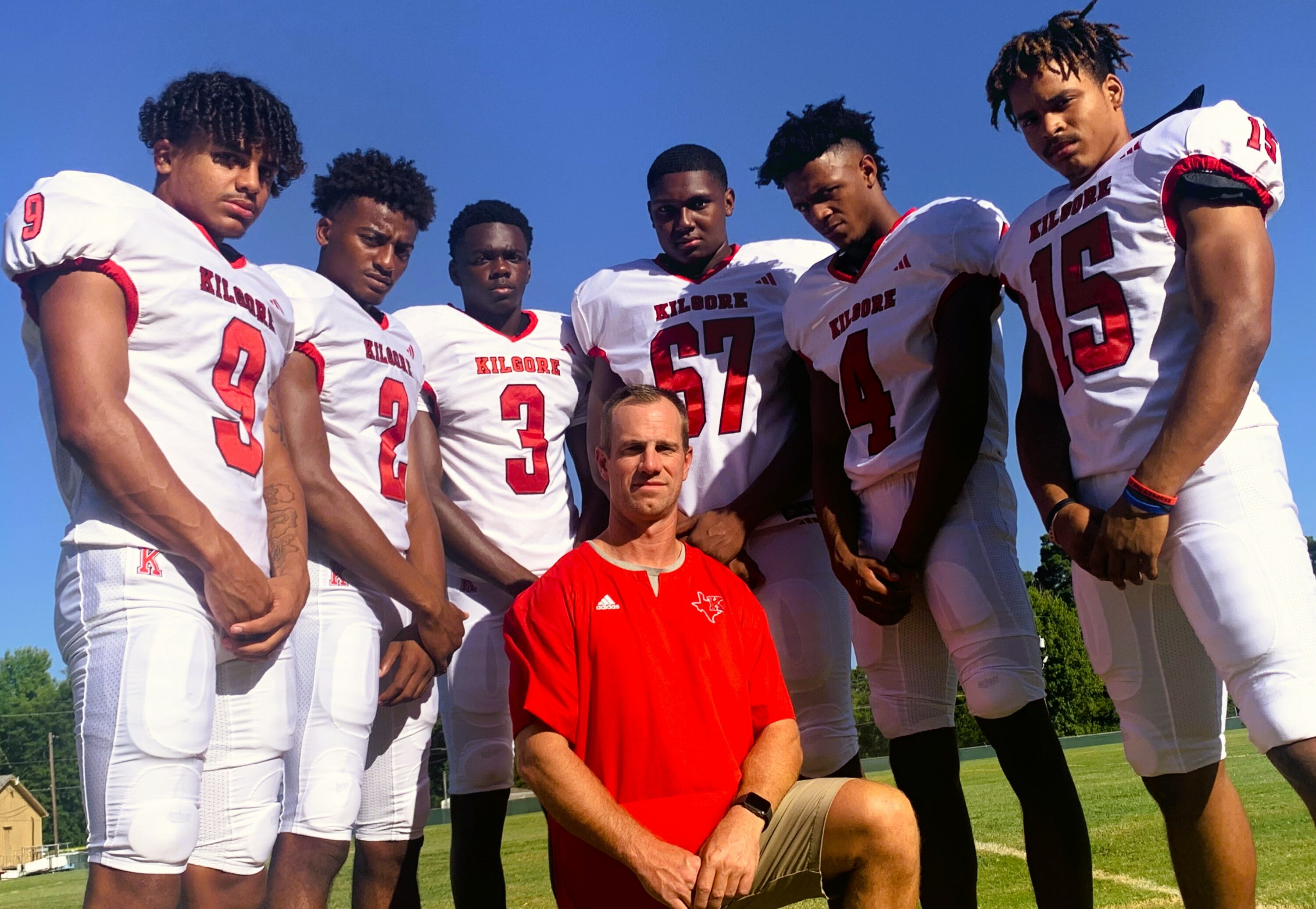
Fuller has been amazing at it. He came in and immediately made an impact, going 11-2 his first season in 2021, went 10-4 in 2022 and then 12-2 last year, going three rounds deep that first postseason and into the fourth round of the UIL Class 4A playoffs the last two years. Under Fuller, Kilgore has won the district championship outright in two of his three seasons. And he’s also been named one of Texas’s top 40 Coaches Under 40.
In all, Kilgore as a program has a record of 578 wins, 376 losses and 30 ties. The Bulldogs have 18 district championships and have made 37 playoff appearances in their history, including 13 years in a row.
They have an overall playoff record of 46-34-1, and under coach Fuller, Kilgore is a somewhat-incredible 33-8.
A little more history: who owns some of Kilgore’s most prestigious records?
Running back Kevrin Justice still owns Kilgore’s record for rushing touchdowns in a single year, and he had 36 of ‘em in that 2013 season, where the Bulldogs would go to the state title game. Davin Rider in 2021 had 28 rushing touchdowns, and Keith Gilliam had 28, as well, back in 2004, the Bulldogs’ 16-0 state championship year.
And yes – ETBlitz.com is planning some special things in celebration of that state championship year this fall.
The late Ladarius Anthony holds the record for career rushing touchdowns at KHS (51, from 2009 through 2011), and Gilliam is second (43, in 2003 and 2004).
Dalton McElyea and Da’Marion Van Zandt share the record for touchdown passes in a season – each of them had 27, with McElyea doing it in 2020, then VanZandt in 2021. McElyea had five in a single game against Lindale in 2020, and also did that in 2019 against Pine Tree, an overtime game.
VanZandt is the school’s career leader in passing yards (4,182 from 2021 through 2022), and Davon Vinson is second (1999-2000, when he logged 3,378 yards through the air).
Just a few more: Tray Epps ran for 401 yards in a single game against Chapel Hill in 2020 for the Bulldogs’ single-game record for rushing yards; Gilliam’s record for rushing attempts in a season (411 in 2004) still stands; Jonathan Thompson’s records for catches in a season (54 in 1999) and in a career (101, in 1998-99) both still stand; and Donovan Adkins’ record for touchdown catches in a single game (three, against Alvarado in 2020) also still leads the Bulldogs’ record books.
Kilgore officially opens the season against Carthage on Aug. 30.
